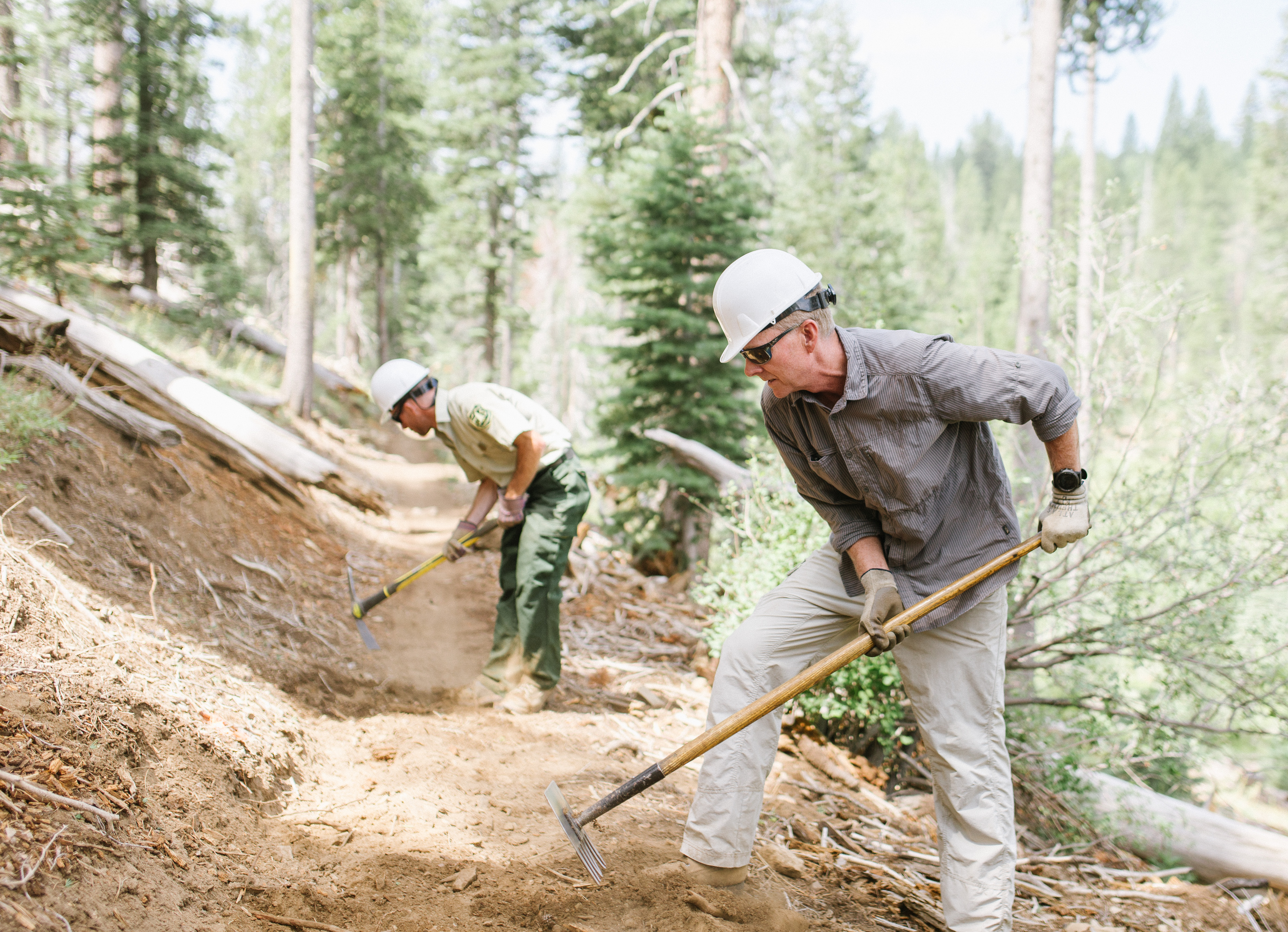For the past two years, the REI community has helped improve outdoor recreation opportunities in our national forests and grasslands through $1 million donations to the National Forest Foundation (NFF)—donations made possible by members’ purchases made with the REI Co-op Mastercard®*. The funding from 2017 supported 10 projects in 10 national forests and grasslands across the country, and work is wrapping up on these projects this month.
“REI and the NFF are committed to public lands. We both fully believe that you have to get people engaged to help them become aware of what national forests are, so they care about them in the long run,” said NFF President and CEO Mary Mitsos.
Both volunteers and co-op members gave back to our national forests through this partnership, which began in 2017 and continues in 2018. More than 700 volunteers worked over 17,000 hours to build and maintain more than 76 miles of trail and restore and maintain around 1,200 acres of habitat. Each purchase transaction members made with their card meant a $0.10 donation, with up to $1 million going to the NFF to support the projects. “All of us at the NFF have been grateful for the partnership. We’ve been able to accomplish amazing work together,” Mitsos said.
The National Forest System, managed by the Department of Agriculture’s U.S. Forest Service, serves many purposes: recreation, water, timber, grazing, minerals, wildlife and others. The 154 national forests and 20 national grasslands make up more than double the total acreage of our national parks. Chartered by Congress as the primary nonprofit partner of the U.S. Forest Service, the NFF works to improve these landscapes.
Being an REI Co-op Mastercard cardmember supports initiatives that help restore trails, campsites and habitat across the country. Here’s an overview of what was accomplished thanks to the 2017 donation:
Tahoe National Forest, California: Alder Creek Commemorative Overland Emigrant Trail
The Tahoe National Forest covers more than 870,000 acres of forest, peaks and rivers. It’s more than beautiful—it’s also historically significant. The national forest sits along one of the many routes emigrants traveled on their way from the Midwest to California in the 1800s, collectively known as the Emigrant Overland route. The Alder Creek Commemorative Overland Emigrant Trail runs along Alder Creek, where the infamous Donner Party was snowbound in the winter of 1846–1847. The trail, a 15-mile out-and-back route just outside of Truckee, California, provides a place to trail run, hike and mountain bike. This large-scale project built two new trailheads, 8 miles of trail and two bridges.
Tongass National Forest, Alaska: Angoon Youth Conservation Corps
Fewer than 500 people live in the rural village of Angoon, located on Admiralty Island in Southeast Alaska. Although it’s surrounded by the Tongass National Forest, many of the young people there don’t recreate in the forest due to lack of gear and skills, according to the NFF. That’s where the Angoon Youth Conservation Corps program comes in. In 2017, six youth participated in an eight-week stewardship project in the Admiralty Island National Monument, which is managed as part of the Tongass National Forest. They maintained and built 11 miles of trail, cleaned 16 miles of shoreline and 17 campsites, cleared trash from eight islands and conducted archaeological surveys. They also learned about camping and sea kayaking during the 40-plus miles of paddling they did to get to various work sites. This project is one example of how the NFF seeks to engage young people through the REI partnership. In total, more than 140 young people were involved with NFF projects in 2017.
Pike–San Isabel National Forest, Colorado: Mount Elbert
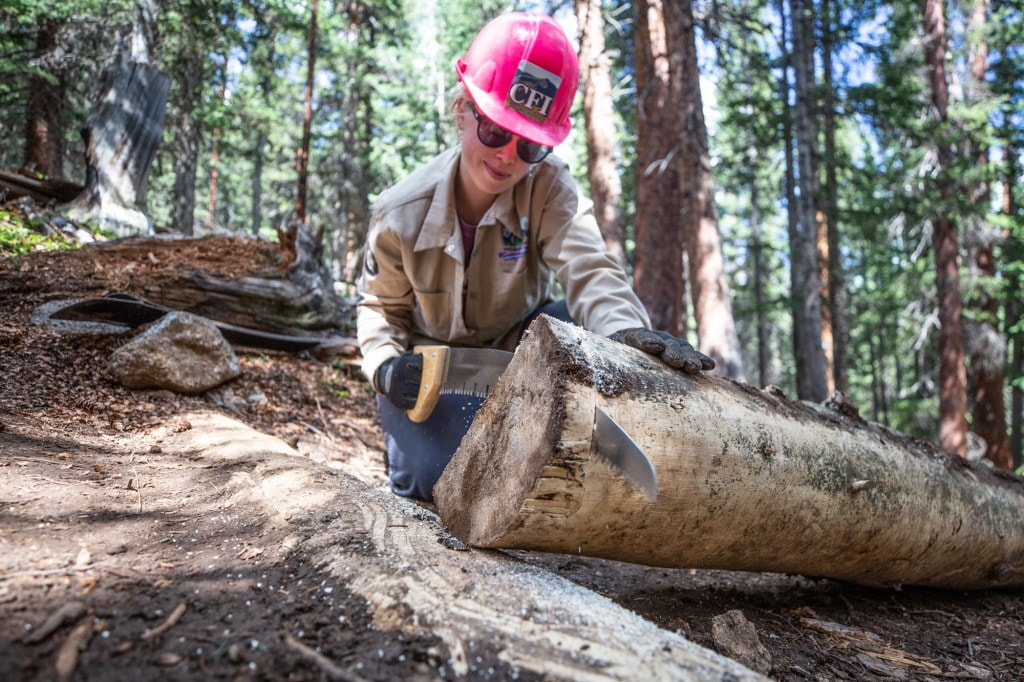
Photo Credit: Kellon Spencer Photography
The tallest of Colorado’s 54 fourteeners (14,000-foot peaks), Mount Elbert is just 105 feet shorter than Mount Whitney in California, the tallest peak in the contiguous U.S. In 2017 alone, 334,000 people climbed Colorado’s fourteeners, leading to degraded trails and impacted fragile alpine habitat, according to the NFF. In partnership with the NFF, the Colorado Fourteener Initiative (CFI) and Rocky Mountain Youth Corps installed 121 log check dams (that help slow runoff), restored 675 linear feet of trail above tree line, and built 1.5 miles of new trail near the bottom of Mount Elbert, enabling the closure of environmentally degrading social trails.
Tonto National Forest, Arizona: West Pinto Creek Trail Restoration
East of Superior, Arizona, rests the Tonto National Forest, which encompasses the 9.75-mile out-and-back West Pinto Creek Trail. This trail experiences a lot of use, but very little maintenance, according to the NFF, resulting in erosion that deposits sediment into nearby streams, creeks and even water supply reservoirs. Fifty-four youth from the Arizona Conservation Corps (ACC) worked with various supporting entities to contribute more than 10,000 volunteer hours to maintain the trail system. They restored proper trail design, improved drainage and covered unauthorized trails with mulch and slash to prevent further use. ACC members also earned Wilderness First Aid and CPR certifications, learned Leave No Trace principles and received an education award.
White Mountain National Forest, New Hampshire: Crawford Path Trail
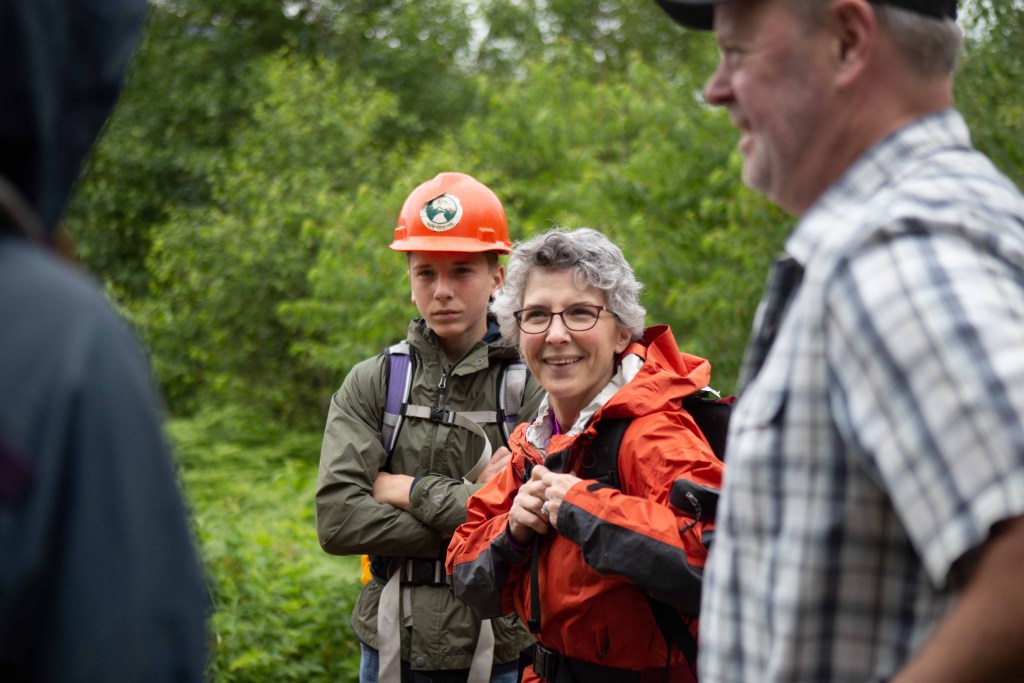
Photo Credit: Brett Fitzgerald Photography
The White Mountain National Forest boasts 1,200 miles of nonmotorized trails across New Hampshire and Maine. Called the “Whites” by locals, this forest is home to 48 peaks above 4,000 feet. The Appalachian Mountain Club keeps track of the amazing people who hike them all. The national forest also features the oldest continuously maintained hiking path in America, Crawford Path, established in 1819. It’s a heavily trafficked trail that hasn’t received much maintenance, according to the NFF, so in 2018, the foundation worked with local groups and the U.S. Forest Service to rehabilitate the trail, just in time for its 200th anniversary. This year, 11 partner organizations banded together to maintain 6 miles of trail with 50 volunteers (including 39 youth and one all-women’s trail crew), totaling over 420 hours.
White River National Forest, Colorado: Quandary Peak
With its relatively gentle slope and easy access from Denver, Quandary Peak’s popularity has led to plenty of unofficial trails being blazed en route to the 14,247-foot summit. The fragile alpine plants can’t handle the foot traffic, leading to erosion which damages plant habitat and contributes to sediment in waterways. The CFI, NFF and Rocky Mountain Youth Corps partnered to bring 221 volunteers together over 245 days to maintain 2.2 miles of trail, install 73 log check dams, restore 883 square feet of alpine habitat and talk with thousands of hikers about Leave No Trace principles.
Nantahala National Forest, North Carolina: Chattooga River Access Enhancement
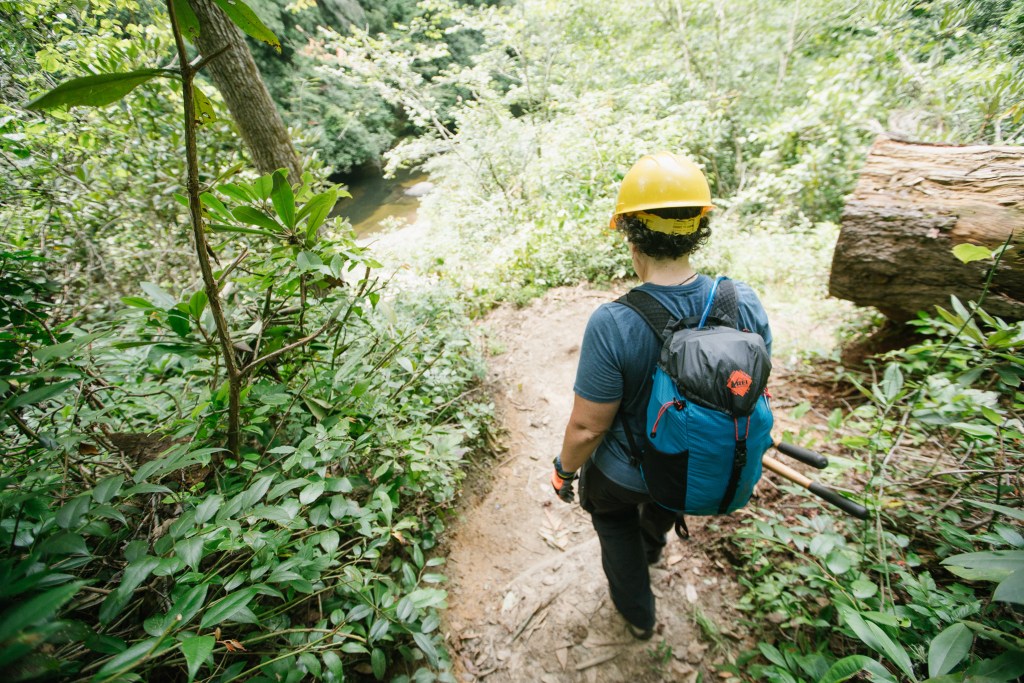
Photo Credit: Shane Hunter
The Chattooga River runs from the Blue Ridge Mountains of North Carolina to its confluence with the Tallulah River on the Georgia-South Carolina border. In 1974, Congress designated this 57-mile river as a Wild and Scenic River. The river offers a variety of rafting experiences for all levels—from tubing and Class II float trips, to Class V rapids for experienced whitewater rafters and kayakers. In 2018, the NFF and partners improved access to the river for these boaters by building and maintaining 4 miles of trail and restoring three trailheads. In celebration of the 50th anniversary of the National Wild and Scenic River Act, the NFF, REI, North Carolina Youth Conservation Corps and the U.S. Forest Service hosted a stewardship event to benefit the Chattooga River and its surrounding area, by engaging 30 volunteers—half of them young people—who collectively donated over 165 hours.
Sawtooth National Forest, Idaho: Alden Gulch Trail
The Beaver Creek Fire ravaged the Sawtooth National Forest in August 2013, burning more than 100,000 acres. Although the Douglas firs in the forest need fire to grow new seedlings and restore nutrients in the soil, the recreation infrastructure in the forest has been impacted heavily. Following the fire, landslides and flooding damaged the Alden Gulch Trail, a popular destination among bikers, hikers, trail runners, horseback riders and backcountry skiers. The NFF worked with the Idaho Conservation Corps to enable a young-adult crew to build 0.5 miles of new trail and maintain 2.5 miles of existing trail. Flooding in the Ketchum Ranger District postponed the work from 2017 to 2018, but work is now completed and the trail will be open for use in the spring of 2019.
Midewin National Tallgrass Prairie, Illinois: Midewin Youth Corps
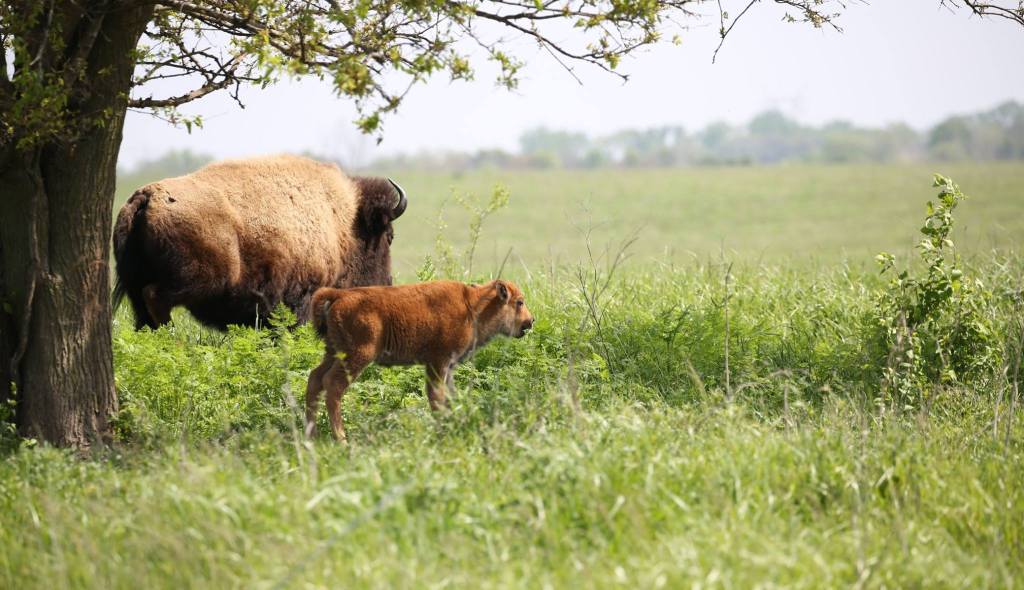
Photo Credit: Rick Short
The Midewin National Tallgrass Prairie is the only tallgrass prairie managed by the U.S. Forest Service, and it’s a 20,000-acre unit of open space an hour from Chicago. It once was filled with industry—roads, railroads, drainage systems and ammunition bunkers can still be seen in the prairie. But once Midewin transitioned from the Joliet Arsenal to part of the National Forest System, the U.S. Forest Service, the NFF, local nonprofits and state and local agencies started working to restore its natural ecosystem. The NFF’s Midewin Youth Corps brought 16 Chicagoan youth to the prairie for six weeks of paid work. They built and maintained 4 miles of trail, maintained and restored five acres of native prairie, and inventoried 8 miles (which helps plan restoration of native plants). They also hosted volunteer events to help the community plant prairie violets, food for a rare native caterpillar.
Chattahoochee–Oconee National Forest: UKB Youth Conservation Corps
The United Keetoowah Band of Cherokees (UKB) once called Georgia’s Chattahoochee-Oconee National Forest home. The U.S. government forced them to move from their ancestral land to Oklahoma, a march that later became known as the Trail of Tears. Through this project, eight UKB youth from Oklahoma spent several weeks in the Chattahoochee-Oconee National Forest working on conservation projects. They maintained 5 miles of trail, restored 2 miles of riverside habitat and worked with a forest service archaeologist to inventory native homesites. This program is continuing in 2018, thanks to the partnership between REI and the NFF.
For a second year in a row, REI will donate up to $1 million to the NFF in 2018, supporting a total of 11 projects. You can become involved by visiting the NFF website or researching local organizations that work in national forests and grasslands near you. And, of course, becoming a part of the REI Co-op Mastercard program that helps fund projects like these.
*This year, REI will donate $0.10 per REI Co-op Mastercard purchase transaction made to the National Forest Foundation, up to $1 million. Non-purchase transactions, including cash advances, convenience checks, balance transfers, and other advance transactions as defined in the Cardmember Agreement, as well as interest charges and fees, do not qualify. Transactions posted in late December of the current year may be applied in the following year. REI may change the benefit or named charity in future years. REI is solely responsible for making the donation.
The creditor and issuer of the REI Co-op Mastercard® is U.S. Bank National Association, pursuant to a license from Mastercard International Incorporated.
©2018 U.S. Bank ©2018 Recreational Equipment, Inc. All rights reserved
